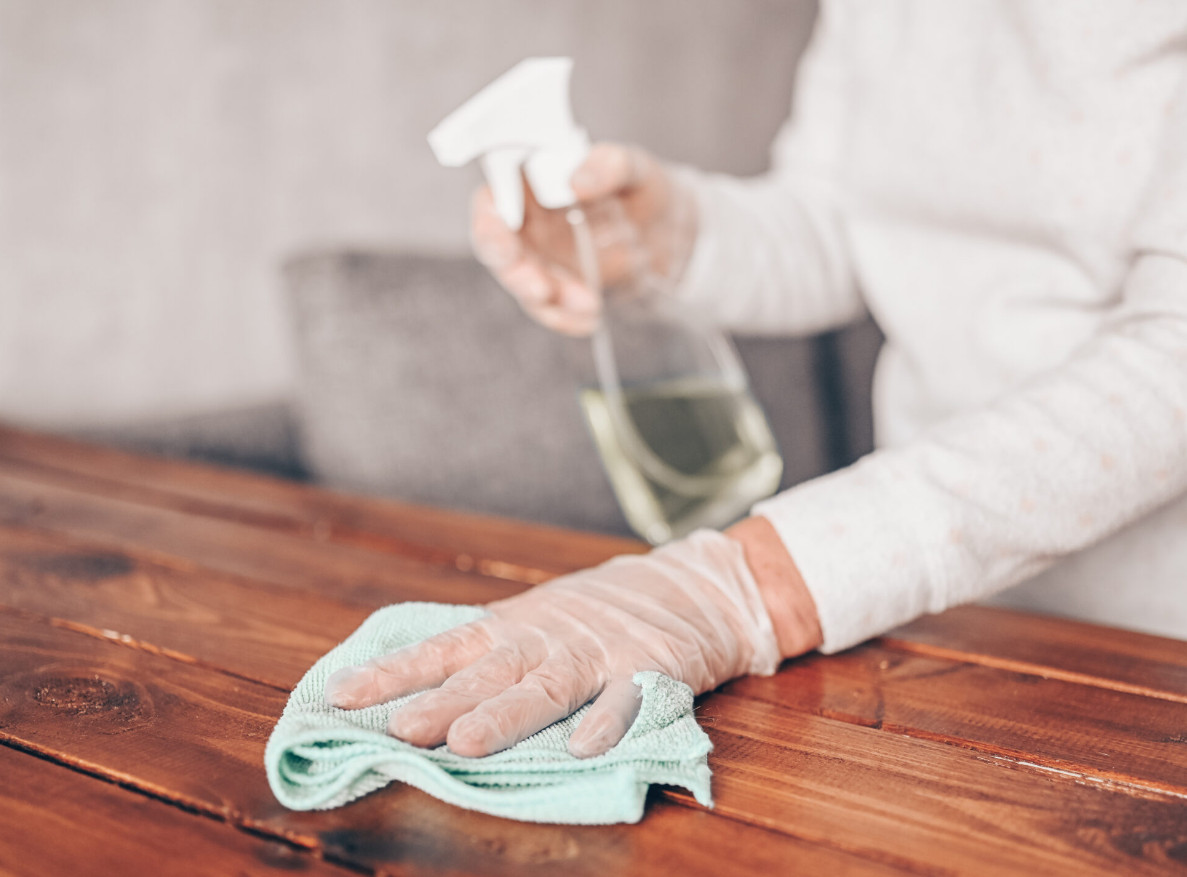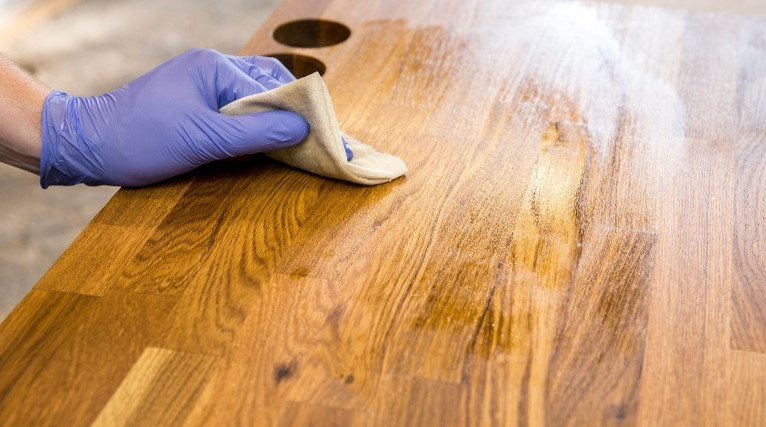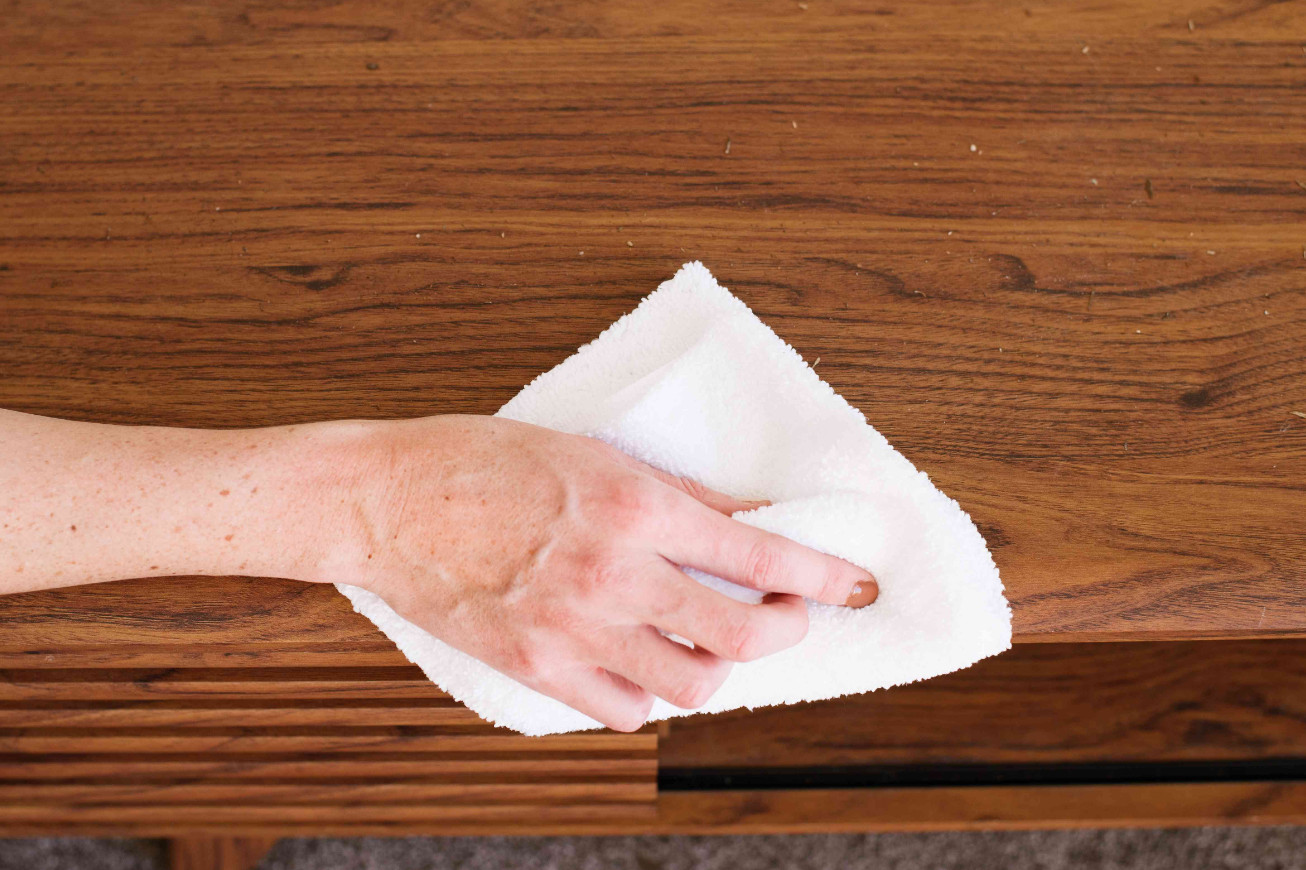Is Vinegar Safe for Wood Furniture? What You Need to Know
Wood Furniture adds character, beauty, and warmth to our homes, they are a cozy place to live in and the most used object in every room. Because it is a natural look and sometimes expensive, keeping wood furniture in good condition is an uphill battle. Cleaning: One of the first things that most homeowners wonder is whether vinegar – a common household cleaning product – can harm wood. Vinegar, popular for its versatility and potency as a natural cleanser, isn’t always good to use on any specific type of wood; you don’t want it to hurt something you don’t mean.
We will see in this post the chemical formula of vinegar, its effects on wood and how and under what conditions it damages wood. And we’ll also talk about healthier alternatives and proven methods for cleaning and maintaining wood furniture without destroying its beauty.

So, What Is Vinegar and Why Should I Clean With It?
Vinegar is an acidic solution, which is usually made of acetic acid and water, which is produced by fermentation. Due to its acidity, it can help to dissolve dirt, shred grease and remove odors which makes it a good housecleaner. Vinegar is also an eco-friendly product because it doesn’t contain harmful chemicals like those that go into regular cleaning products.
It is acidic which is good at reducing certain types of stains and dirt, and it’s also a great antibacterial. For those reasons, vinegar is sometimes recommended as a cleaner for countertops, glass, and some types of upholstery. But wood surfaces have their own particular issues because they are porous, have a different finish, and can be warped or stained by acid.
Effects of Vinegar on Wood Furniture
| Effect | Description | Example |
|---|---|---|
| Corrosion of Finish | Vinegar can disintegrate finishes like varnish, lacquer, or polyurethane, leaving wood vulnerable. | Discoloration and wear on old furniture with thin varnish. |
| Coloring and Staining | Acid reacts with tannins in wood (e.g., oak, maple) causing brown patches or grayish blotches. | Visible brown spots on oak furniture. |
| Drying of Wood | Pulls out natural oils and moisture, making wood dry and prone to cracking or breaking. | Furniture becoming brittle over time. |
| Warping on Raw Wood | Water in vinegar can seep into untreated wood, causing it to swell and deform. | Warped table edges in untreated wood. |
Safer Alternatives to Vinegar for Wood Cleaning
| Method/Product | Key Features | When to Use |
|---|---|---|
| Low-Acid Soap & Water | Gentle cleaning without acidity. Use mild soap diluted in warm water. | Regular cleaning to maintain wood’s natural look. |
| Commercial Wood Cleaners | Specifically designed for wood; often include protective additives. | Cleaning delicate or antique wood furniture. |
| Olive Oil & Lemon Juice | Organic, non-toxic. Cleans with lemon and seals with olive oil. | Polishing and restoring old wood furniture. |
| Microfiber Cloth (Dry Dusting) | Non-abrasive and removes dust effectively. | Daily or frequent light cleaning without chemicals. |
Vinegar Is Bad For Wood Furniture Why You Can’t Use Vinegar On Wood Furniture?
Vinegar is popularly touted for its all-natural cleaning properties, but it’s acidic qualities can be dangerous if you use it on wood. Here’s an expanded breakdown of how vinegar can actually attack wood:
Wood Finishes Corroded by Acid: The majority of wood furniture has a finish of some kind (Vanish, lacquer, shellac, polyurethane, etc) to stain the wood against scratches, moisture and wear. These finishes can be disintegrated with age by vinegar, though. Vinegar is also acidic and will slowly discolor the varnish on wood and render it susceptible to rot and decay. Even a single cleaning with plain vinegar can sometimes leave a streak of visible wear on the surface of grained wood if it’s already thin or is quite old.
Colouring and Staining: The acid in vinegar will attack some types of wood and it may corrode or stain it. Oak and maple, for instance, are high in tannins, and if they get too acidic like vinegar, they will become brown patches or spots. Other kinds of wood can also get lightly bleached – the colour getting grey or blotchy from using vinegar repeatedly.
Drying out the Wood: Wood is moist naturally which keeps it aerated and beautiful. Because of the acid, vinegar can pull natural oils and moisture from the wood making it soft and dry over time if used repeatedly. This drying is destructive not only to the surface but also increases the chances of the furniture cracking, buckling, and breaking.

Warpage on Raw or Unsealed Wood: For raw or untreated wood, vinegar is a nightmare. The water gets into the grain and can elongate and even warp as it dries. Warping might mutilate the furniture and it might not even be possible to recover the original. There are cases where wood furniture can’t be repaired by a professional or it is impossible to repair.
You can also read these articles on our website:
When Vinegar is Not Harmful for Wood Furniture: These are Some of the Things Vinegar Can Be Usen’t For.
Vinegar can usually be harmful to wood furniture, but there are situations where it can be safely used, given the right precautions:
Solution of Distilled Vinegar: Very heavily diluted vinegars are less rough on wood. One part vinegar to four parts water can be a gentle cleanser that’s safe for occasional light cleaning of sealed wood. But even with the dilute version, test first on a hidden surface before use everywhere.
Applying White Vinegar On Stains of Varnished Wood: At very thin coats, white vinegar can occasionally be applied to wood with a firm intact varnish. But the vinegar needs to be watered down and used sparingly, and spread over the entire thing with a moist, non-abrasive cloth rather than pouring it on.
Sturdy Stains Spot Cleaning: Vinegar can be a strong spot cleaner for stubborn wood stain removal if you used it correctly and scrubbed away. If there’s a glue residue or water ring, for instance, just put a few drops of undiluted vinegar on a cloth and wipe it around. Always clean it with a simple cloth of water and then dry cloth so any remaining vinegar does not sit on the wood.
Alternatives to Vinegar for Wood Furniture Cleaning Safer Products compared to Vinegar for Cleaning wood furniture.

Layla Armstrong, as the author of this article and a home management expert, says :
The good news is that there are some non-toxic cleaning methods that you can use to keep your wood furniture looking and lasting longer.
Low Acid Soap and Water Solution: If you clean frequently, a few drops of mild dish soap in warm water works well, without acidity. Use the soapy water to wipe down the wood using a clean damp cloth, and rinse with fresh water. Always dry the wood separately, so the water does not soak in.
Commercial Wood Cleaners: There are a few commercial wood cleaners which are made specifically to clean and protect the wood. These cleaners usually have additives that can treat the wood and remove dirt and sand without rusting the finish. Seek products made for your specific wood or finish, and read the directions.
Olive Oil & Lemon Juice: You can always go for an organic olive oil and lemon juice mix as a clean and polish solution for wood. The lemon juice scrubs away dirt, and the olive oil seals the wood. Use a cloth to apply the paste, with the grain of the wood, then scrub with another dry cloth. This remedy is very useful when you are redoing old wood furniture.
Dry Dusting with Microfiber Cloth: Sometimes all that you really have to dust wood furniture is it. Clean dust and smudges with a dry or slightly damp microfiber cloth using no cleaning product. Microfiber is pliable, so it doesn’t scratch the wood and attracts dust.
FAQ :
- Is it OK to clean wood furniture with vinegar?
Yes, you can clean wood furniture with vinegar, but it should be diluted with water (1:1 ratio) to avoid damage. Vinegar is a natural cleaner that can remove dirt and grime, but overuse or using it undiluted may strip the finish or dry out the wood. Always test on a small, hidden area first and avoid using it on antique or delicate wood pieces. - What surfaces should not be cleaned with vinegar?
Vinegar should not be used on natural stone (like marble or granite) as it can etch the surface. Avoid using it on waxed wood, cast iron, or aluminum, as it can cause damage or discoloration. Additionally, vinegar should not be used on electronic screens or rubber surfaces, as it can degrade these materials over time. - Is vinegar safe on couches?
Vinegar can be safe for cleaning couches, especially for removing odors or light stains, but it should be diluted and tested on a small, inconspicuous area first. Avoid using it on delicate fabrics or leather, as it may cause discoloration or damage. Always blot, don’t rub, and ensure the area dries completely to prevent moisture damage. - Does vinegar react with wood?
Vinegar can react with wood if used undiluted or excessively, as its acidity may strip finishes, dull the surface, or dry out the wood over time. However, when diluted properly, it is generally safe for cleaning and disinfecting wood surfaces. Avoid using vinegar on unfinished or waxed wood, as it can cause more significant damage.
Article source:

Great tips on maintaining wood furniture! I’ve always used vinegar for cleaning, but now I see why it’s not ideal. How effective is the olive oil and lemon juice mix compared to commercial cleaners?
The olive oil and lemon juice mix is a great natural alternative for cleaning and polishing wood furniture. While it’s effective for regular maintenance and restoring the shine of wood, commercial cleaners are usually more specialized and can provide better results for deep cleaning or treating delicate surfaces. If you’re dealing with heavy grime or antique pieces, a commercial cleaner might be the better choice.
The section on staining caused by vinegar is eye-opening! I have oak furniture that already has a few brown patches. Is it too late to fix these, or are there ways to restore the wood?
Hi Liam, it’s not necessarily too late to address the brown patches on your oak furniture. You can try sanding the affected areas lightly and reapplying a wood stain or finish that matches the original color. For less severe stains, using a mixture of olive oil and lemon juice or a commercial wood cleaner designed for oak may help improve the appearance. If the damage is extensive, consulting a professional might be the best option
This is a fantastic guide for wood furniture care. Can diluted vinegar be used safely on sealed wood if followed by immediate drying, or is it still too risky?
Thanks, Mark! Diluted vinegar can be used on sealed wood, but it’s still somewhat risky. Even with immediate drying, the acidity in vinegar may gradually weaken the finish over time. It’s always best to test it on a hidden spot first. For safer options, consider using a mild soap and water solution or a microfiber cloth for cleaning sealed wood.